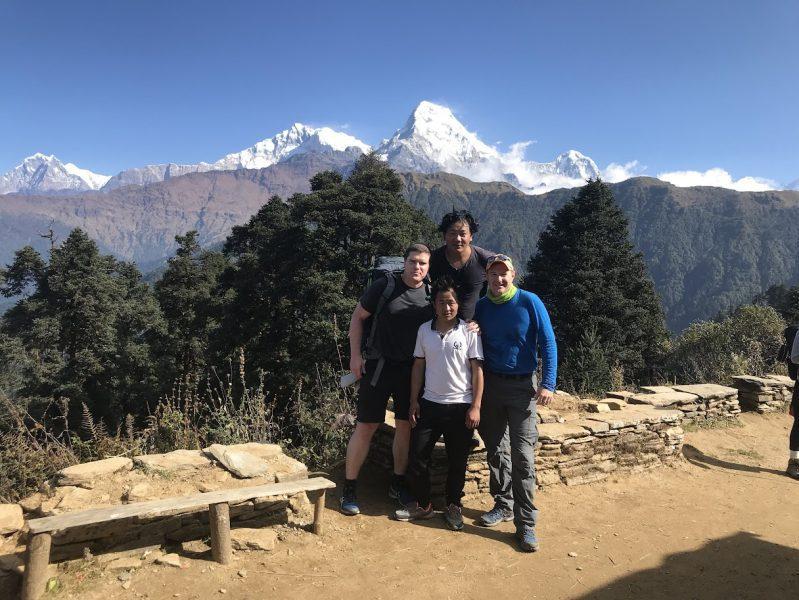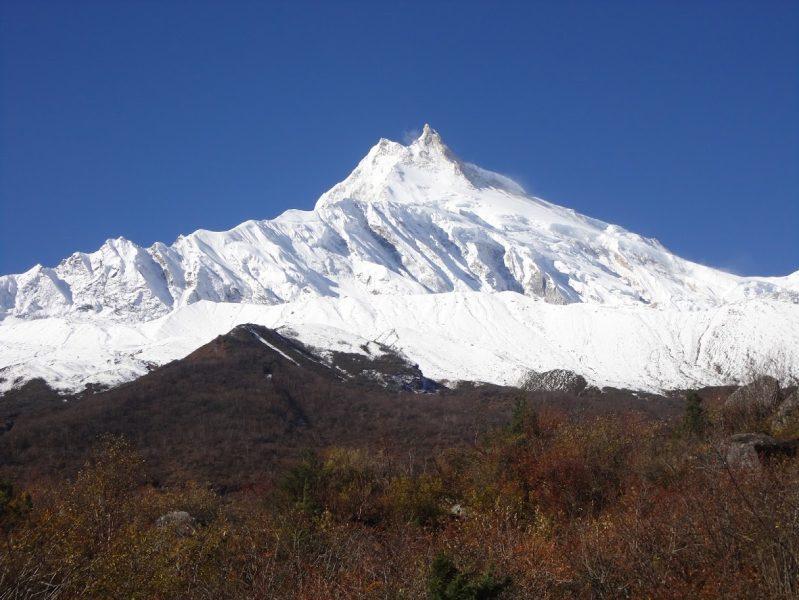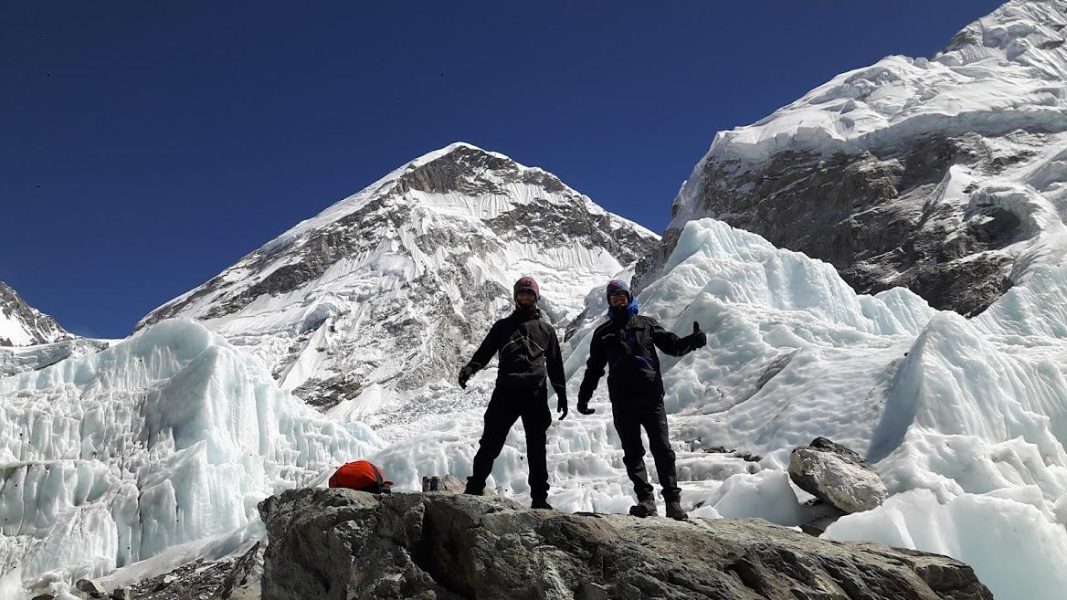- Home
- single package
Mani Rimdu Festival Trek
EverestTrip Grade
ModerateTrip Type
TrekkingMaximum Elevation
3860 MAccomodation
Tea houseDestination
EverestBest Time
October 28th, 29th, and 30th, 2023Trip Start
Lukla/Phaplu/BupsaTrip Ends
LuklaOverview
Tengboche Mani Rimdu Festival Trekking
The Tengboche Mani Rimdu Festival Trekking is a unique blend of cultural immersion and Himalayan adventure. This journey takes trekkers deep into the Khumbu region, where the vibrant Mani Rimdu Festival unfolds at the famous Tengboche Monastery, the spiritual center of the Sherpa community. Beyond the breathtaking mountain views of Everest, Ama Dablam, and Lhotse, this trek allows participants to witness one of the most sacred Buddhist festivals in Nepal. Unlike a standard Everest Base Camp trek, the Tengboche Mani Rimdu Festival Trek is designed to align with the festival dates, offering not just scenic landscapes and Sherpa hospitality, but also a chance to experience authentic rituals, masked dances, and spiritual blessings. It is a journey of both physical endurance and cultural discovery, making it one of the most rewarding treks in the Everest region. What is the Tengboche Mani Rimdu Festival? The Tengboche Mani Rimdu Festival is the most important religious celebration for Sherpa Buddhists in the Everest region. Held every autumn, usually in October or November (depending on the Tibetan lunar calendar), it lasts for three days at Tengboche Monastery.
Itinerary
Upon your arrival at Tribhuvan International Airport, one of our representatives will receive you and transfer you to your hotel. Overnight at hotel in Kathmandu.
An adventure, we will be taking a flight to Lukla. Immediately after we fly from Kathmandu, we will be able to see the majestic mountains towering over the hills. This is a beautiful sight to witness and a very typical scene in Nepal. After landing in Lukla, which is considered one of the most dangerous airports of the world, we will trek to Phakding through the forested trail dotted with small hamlets. Overnight in Phakding.
With the Dudh Koshi River keeping us company, we will make our way to the famous Sherpa town of Namche Bazaar through the forests of pine. This trail is dotted with suspension bridges over many small streams and rivulets, which are the lifeline of Nepal’s Himalayan region. If the weather is good, we will be able to see spectacular views of the mountains, including Thamserku (6608m), Everest (8848m), and Ama Dablam (6856m). Overnight in Namche Bazaar
Acclimatization is vital for any successful trip, and we will do so by hiking around Khumjung and Khunde villages. We will first make a climb to Everest View Hotel (3962m), from where we will get unbeatable views of the mountains such as Everest (8848m), Ama Dablam (6856m), and many others. We will then hike to the large Sherpa village of Khumjung, which is famous for its monastery that displays an ancient Yeti skull in its premises. Afterward, we will hike to Khunde village to visit Khunde Monastery and Khunde Hillary School. We will then hike back to Namche Bazaar for the overnight stay.
After a hearty breakfast with magnificent views, we will make our way to Tengboche, our destination. Until we reach Phunki Tenga, we will have to tread on easy paths, and from there, we will begin the steep ascend to Tengboche. As soon as we reach the village, we will be able to see the famous Tengboche Monastery, which is the biggest one in this region with the backdrop of amazing Himalayas. Overnight in Tengboche.
In Tengboche begins the colorful Mani Rimdu Festival, celebrated on a full moon during the month of October, according to the Tibetan Lunar calendar. The Sherpa’s and the Lama’s gather together in the premises of Tengboche Monastery to celebrate this festival, where the monks wear elaborate masks and costumes and perform various dances and prayers. There is a sand mandala which is created with colorful sand and many symbolic designs. Mantras are chanted to remove the evil spirits through ritualistic performances. After the construction of the mandala, different phases of the festivals begin called the Wong, Chham, Ser-Kyem, Jinsak, and Chhingpa. Various symbolical rituals are performed during this festival, some displaying the determination of meditation and some are rather funny with elaborative performances. Beautiful photographs can be taken during this time.
Today also some of ritual and religious activities will be performed by the monks of Tenboche monastery.
After witnessing the colorful festival, today we will make our way back to Namche Bazaar. In an area which seems utterly beautiful, the festival we have just witnessed seems like a celebration of life and a celebration of all the hardships that the people of this region have to go through. With panoramic views of the Himalayas, we descend on a familiar trail to reach Namche. Overnight in Namche Bazaar.
Leaving the bustling Namche behind, we will make our way to Phakding retracing our steps alongside Dudh Koshi River. The Dudh Koshi River and its frothy appearance slamming against the rocks paint a very real and wild picture of this region. Descending on a trail through lush rhododendron and magnolia forests, we walk past small villages and monasteries to finally reach Phakding. Overnight in Phakding.
Today is the last day of walking for us, and we will enjoy it to the fullest. Walking on a trail dotted with monasteries, prayer wheels, and Mani walls, we make our way to the picturesque town of Lukla. Since we have a lot of spare time in Lukla, we can look back on the memories we’ve made and the different cultures and traditions we’ve witnessed. The life in the Himalayas is very unique and rich along with many hardships. As peaceful as it may seem, life is tough, and patience is tested at every moment and a visit here is bound to change many perspectives of life. Overnight in Lukla.
Today we fly back to Kathmandu from Lukla. This flight will give us a different feel this time as we will feel oneness with the mountains and look down upon the paths we took. As we take back the colorful memories from this place, we hope that you will feel a great sense of relaxation and have rekindled your spiritual side. As we get to Kathmandu, you can give your legs a much-needed rest and later get out in the evening for a lovely stroll around the city. Overnight at the hotel in Kathmandu.
There are many options to visit the world heritage site of UNESCO in Kathmandu valley- visit Pashupatinath for hindus cremation, Swayambhunath and Boudhanath, Kathmandu Darbar Square and many more which you can chose some of them.
Kathmandu with its rich heritage and culture will take your breath away. As your free day today, you can visit places such as Kathmandu Durbar Square, which houses the famous Kumari—the living goddess of Nepal. Later, we visit the quaint Patan Durbar Square. These squares were the palaces of the ancient kings of the valley and boast of incredible woodwork and architecture. You can see how much the ancient Kathmandu thrived with brilliant artisans who created such structures that still stand today. You can also visit Pashupatinath temple, which is the most significant temple for the people of Hindu faith. Afterward, you can visit Boudhanath, which holds great significance for the people of the Buddhist faith. You can taste some yummy Nepali dumplings “Momo” and also try some local homemade brew. Overnight at the hotel in Kathmandu.
As your journey to Nepal comes to an end today, we will drop you at the airport, a few hours before your scheduled flight back.
What's Include in Cost
- Airport pick up and drive according to itinerary and plan.
- Hotel in Kathmandu.
- Trekking permits according to itinerary.
- TIMS cards.
- Food and accommodation during the trip.
- Hot drinks- Teak, Coffee, etc during the trek.
- Flight: Kathmandu-Lukla-Kathmandu for clients.
- Flight for guide: KTM-LUK-KTM.
- Porters and guide with their wages.
- Insurance for local staffs.
- Entry fee for Sagarmatha National Park,
- Entrance fee of Pasang Lhamu Rural Municipaility,
- High altitude chamber as per requirement,
- Wages and Equipment for climbing guide.
- Local airport tax and land transportations according to program.
- Applicable Nepal government tax
What's Excluded in Cost
- Nepal entry visa.
- International flights and airport tax.
- Travel insurance.
- Personal expenses, Hot or Mineral water
- Laundry service and Bar Bills
- Internet and Battery charge
- Alcoholic drinks with mineral water.
- Rescue in emergency.
Fixed Departure
| SNo.0 | Date | From | To | |
|---|---|---|---|---|
| 1 | Enquiry This |
Equipment
Advisory
Inportant Things Required
FAQ
When you are up in the mountains in Nepal, we would suggest you to be ready for anything. Weather forecasts for Lukla are never correct and different sources will give you different information. If it is a really bad day in terms of weather, the airlines will themselves cancel the flight and you might have to wait till the weather clears. Yes, flying in high altitude is never easy, even on a clear sunny day, the plane might face turbulence because of the wind blowing from the mountains. But overall the flight to Lukla is very exciting and it’s an experience that you will never forget.
When you are up in the mountains in Nepal, we would suggest you to be ready for anything. Weather forecasts for Lukla are never correct and different sources will give you different information. If it is a really bad day in terms of weather, the airlines will themselves cancel the flight and you might have to wait till the weather clears. Yes, flying in high altitude is never easy, even on a clear sunny day, the plane might face turbulence because of the wind blowing from the mountains. But overall the flight to Lukla is very exciting and it’s an experience that you will never forget.
When you are up in the mountains in Nepal, we would suggest you to be ready for anything. Weather forecasts for Lukla are never correct and different sources will give you different information. If it is a really bad day in terms of weather, the airlines will themselves cancel the flight and you might have to wait till the weather clears. Yes, flying in high altitude is never easy, even on a clear sunny day, the plane might face turbulence because of the wind blowing from the mountains. But overall the flight to Lukla is very exciting and it’s an experience that you will never forget.
When you are up in the mountains in Nepal, we would suggest you to be ready for anything. Weather forecasts for Lukla are never correct and different sources will give you different information. If it is a really bad day in terms of weather, the airlines will themselves cancel the flight and you might have to wait till the weather clears. Yes, flying in high altitude is never easy, even on a clear sunny day, the plane might face turbulence because of the wind blowing from the mountains. But overall the flight to Lukla is very exciting and it’s an experience that you will never forget.
















